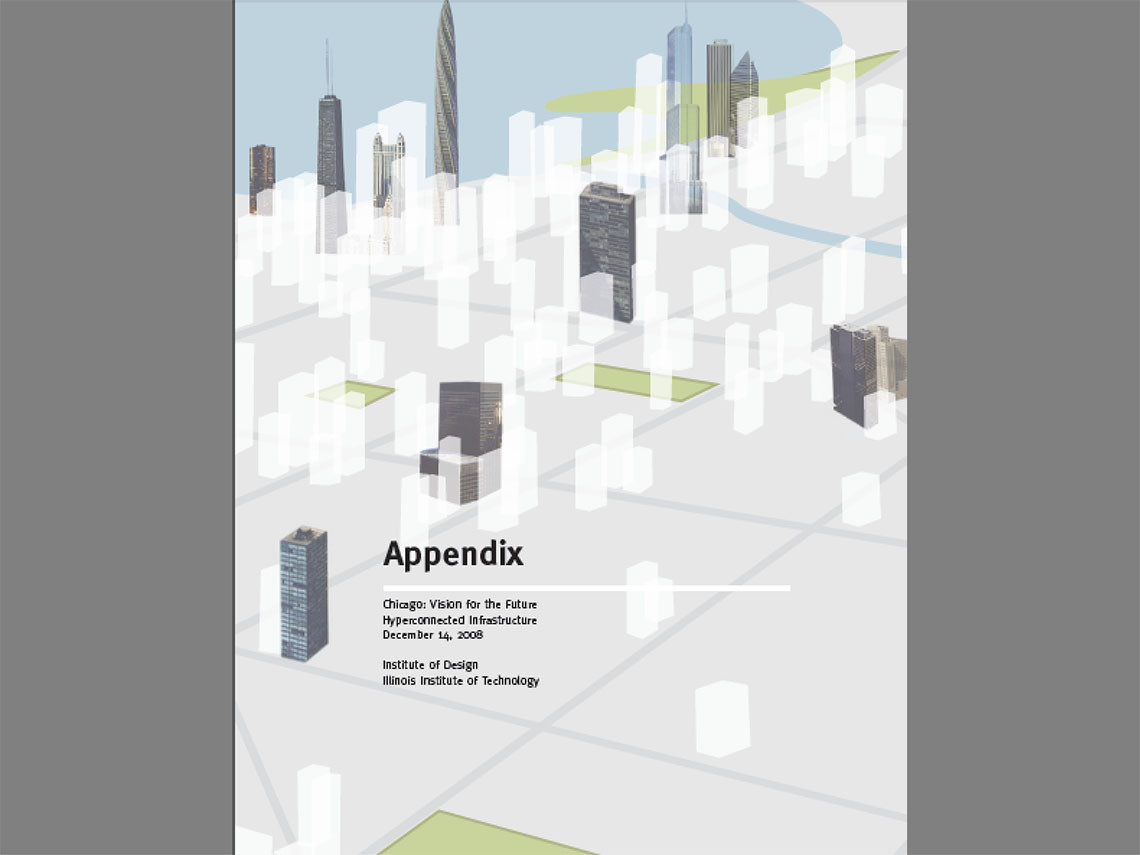
Synopsis
Concepts for Chicago and similar cities to consider in planning for the next one hundred years.
Overview
2009 marks the Centennial of Daniel H. Burnham’s and Edward H. Bennett’s 1909 Plan of Chicago. The Burnham Plan, as it become known, redirected Chicago’s development from disorganized industrial and commercial growth to a planned movement toward the “city beautiful”. Along the way, Chicago became a green city with a necklace of parks and boulevards recognized around the world for its beauty. Challenged by Burnham, Bennett and the Commercial Club of Chicago, the city committed to Burnham’s vision of an environment that could be both functional and beautiful.
One hundred years later, Chicago and major cities worldwide face different but equally portentous problems and opportunities. Powerful forces, both destructive and constructive, confront cities and society. Global warming is changing climate and energizing unpredictably destructive weather. Population growth and movement to the cities are at an all-time high. Global economics are reshaping trade and disrupting established patterns of supply and demand, Voracious energy needs are depleting traditional energy resources, High-tech materials sciences along with communications, computing, biological and engineering sciences are reshaping what is possible. Negative and positive, the agents of change have raised the stakes.
Established cities like Chicago must evolve more quickly. Entirely new cities will need to plan for change from the beginning. Both will need vision to weave new technologies into their urban fabric. Daniel Burnham’s famous dictum — “Make no small plans” — is most timely and appropriate in this year of centennial celebration.
This project explores urban possibilities for the next century. Rather than a conventional “plan”, however, it examines a variety of physical, procedural and organizational concepts now emerging or that soon could emerge from evolving technologies and changing social forces. Overall, the project is composed of four separate but integrated studies focusing on urban infrastructure, transport, environmental features (river and lake front), and the role of nature in the city.
Final Results
1. Overview
Project overview presentation: 1 Chicago Vision presentation_all
2. Hyper-connected Infrastructure
Advanced concepts for supplying energy, water, waste removal, communications and information services where needed throughout the city.
Report & appendices: 2_hyperconnected_infr_report, 2_hyperconnected apphyin_small
Chicago Vision for the Future: Hyperconnected Infrastructure, Dec 2008
Ruth Nechas Project Leader, Cecilia Ambros, Daniel Erwin, Amanda Wirth
3. Responsive Transport
Transport options for moving people and commodities conveniently with minimal intrusion of the public space.
Report & appendices: 3 rpttran_small, 3 apptran_small
Chicago Vision for the Future: Responsive Transport, Dec 2008
Jennifer Lee Project Leader, Andy Conrad, Prashant Desai, William Huang
4. Featured Environment
Concepts for enhancing the contributions of special environmental features to the urban experience.
Report & appendices: 4 rptenvironment, 4 appenvironment_small
Chicago Vision for the Future: Featured Environment, Dec 2008
Amanda McKown Project Leader, Mehmet Cirakoglu, Judd Morgenstern, Matthew Swift, Dongzhe Sun
5. Infused Nature
Strategies for bringing nature more intimately into the public and private urban space.
Chicago Vision for the Future: Infused Nature, Dec 2008
Ruth Schmidt Project Leader, Ann Hintzman, Marisa Knopman, Leonard Thomas McCue, Nikki Pfarr
Tags:
Faculty
Students
Amanda McKown
Amanda Wirth
Andy Conrad
Ann Hintzman
Cecilia Ambros
Daniel K. Erwin
Jennifer Lee
Judd Morgenstern
Leonard Thomas McCue
Marisa Knopman
Matthew Swift
Mehmet Cirakoglu
Nikki Pfarr
Prashant Desai
Ruth Nechas
Ruth Schmidt
William Huang